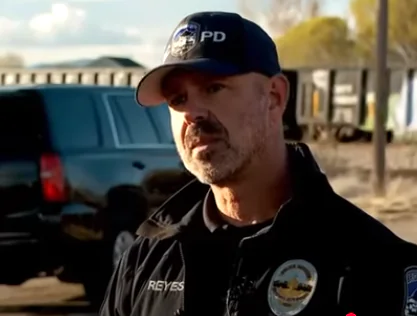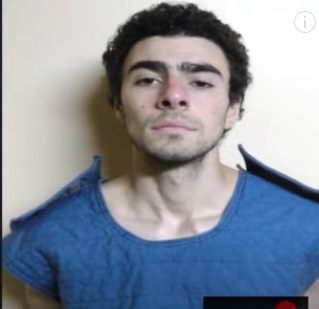Karen Read’s Second Murder Trial: The Road to Justice Continues
The second murder trial of Karen Read, a case that has gripped Massachusetts and beyond, is now underway in Norfolk County Superior Court. The process of jury selection has begun, and it has already been an intense and emotionally charged experience for all involved. On the first day of jury selection, 92 prospective jurors were required to fill out a detailed questionnaire. Out of this group, only two were selected to serve on the jury, highlighting the complexity of the case and the difficulties of finding unbiased individuals willing to hear the facts and decide the case impartially.
Karen Read is facing serious charges in connection to the death of her boyfriend, John O’Keefe, an officer with the Boston Police Department. The incident occurred on a snowy night in January 2022, when Read allegedly left O’Keefe in a driveway after an argument. He was later found dead from hypothermia and blunt force trauma. This tragic event has sparked intense legal proceedings, and this second trial follows a previous one that ended in a mistrial after the jury was unable to reach a verdict.

The First Trial: A Mistrial and Deadlock
The first trial of Karen Read, which took place earlier, was filled with twists and turns. The jury deliberated for several days but could not come to a unanimous decision. After nearly nine weeks of testimony, 74 witnesses, and over 650 exhibits, the jury declared itself deadlocked, leading the judge to declare a mistrial. For the prosecution, the case seemed clear: Karen Read had an argument with her boyfriend, and in a moment of anger or frustration, she ran him over with her car and left him to die in the snow. They argued that the physical evidence, including shards of broken glass and a damaged tail light, supported the theory that Read had indeed left O’Keefe for dead.
On the other hand, the defense presented a different narrative. They suggested that Read was being framed. The defense claimed that the couple had parted ways amicably in the driveway, but an altercation had occurred inside the house where O’Keefe was attacked. According to the defense, O’Keefe was beaten and thrown out into the snow, where he succumbed to the cold. The defense team pointed to the possibility of police corruption, asserting that crucial evidence was planted to make it look like Read had committed the crime. These allegations of police misconduct were particularly serious because of the involvement of several officers with connections to both Read and O’Keefe, creating a complex web of potential motives and actions.
The jury could not agree on these conflicting accounts, and after days of deliberation, they were unable to decide, leading to the mistrial. For Read and her supporters, the inability to reach a verdict was seen as a partial victory, a chance to have the case retried in hopes of a more favorable outcome.
The Ongoing Legal Struggles: A High-Stakes Second Trial
As the second trial begins, much remains the same. The core facts of the case have not changed, and Read still faces the same charges: second-degree murder, manslaughter while under the influence of alcohol, and leaving the scene of a personal injury and death. However, the atmosphere surrounding the trial is different this time. For one, the jury selection process has been much more rigorous. Out of 92 potential jurors, only two have been selected so far, with the majority of the remaining pool either being dismissed due to biases or preconceived notions about the case. According to reports, around 78 of the 92 jurors were already familiar with Read’s case, which further complicated the process of finding impartial individuals.
The most critical aspect of jury selection is determining whether jurors have already formed opinions about the case. A handful of potential jurors admitted to having already made up their minds, resulting in their immediate dismissal from the selection process. This has made the process significantly slower than anticipated, and both the defense and prosecution are working hard to find individuals who can remain objective throughout the trial.
As the jury selection continues, it is clear that this trial will be just as complicated as the first. Many potential jurors have strong opinions about law enforcement, domestic violence, and the role of alcohol in the case, all of which could impact their ability to judge the case impartially. The process is expected to take several weeks, as both sides seek to ensure that the individuals selected can view the evidence without bias.
The Emotional Impact and Public Perception
The emotional toll of this case has been felt by many, especially those involved in the trial. Karen Read herself has been vocal about her feelings, expressing confidence and optimism as she faces the charges once again. She spoke about the support she has received from her attorneys and from her family, emphasizing that she feels “blessed” and “comfortable” despite the gravity of the situation. However, the public’s view of Read and the case is far from clear-cut. Supporters of Read have been outspoken, holding signs and rallying outside the courthouse, but they have been kept at a distance due to strict security measures implemented by the court. These barricades are designed to prevent the protesters from influencing the jury or disrupting the proceedings.
The case has also attracted significant media attention, with many outlets covering the trial extensively. This has made jury selection even more difficult, as potential jurors may have been influenced by the widespread coverage of the case. The media’s role in shaping public perception of Read and the events surrounding O’Keefe’s death cannot be underestimated, and both the defense and prosecution must contend with this added layer of complexity as the trial unfolds.
A Long Road Ahead
As the second trial of Karen Read progresses, it is clear that the journey toward justice will be a long and difficult one. With a jury still not fully seated and the weight of public opinion hanging over the proceedings, it remains to be seen how this case will ultimately be resolved. The defense has made it clear that they intend to challenge the prosecution’s narrative and continue to assert that Read is innocent of the charges brought against her. For the families involved, for the police officers, and for the residents of Massachusetts, this case represents a continuing saga of tragedy, legal battles, and a search for truth.
The stakes are high, and the outcome is uncertain, but one thing is clear: the road to justice for both Karen Read and John O’Keefe is far from over. The second trial has begun, and it will be watched closely by all those seeking answers and a fair resolution to a case that has captured national attention.








